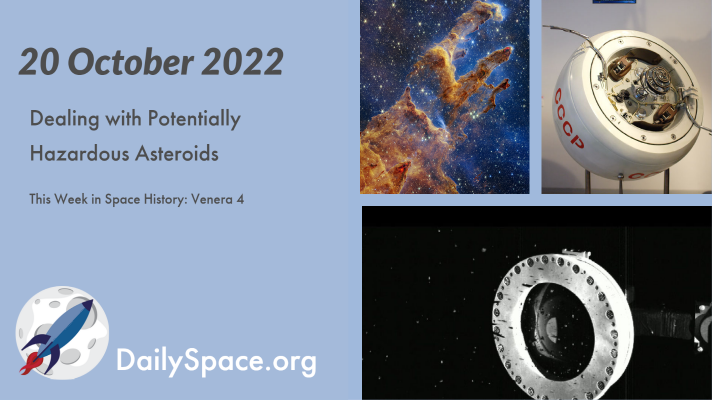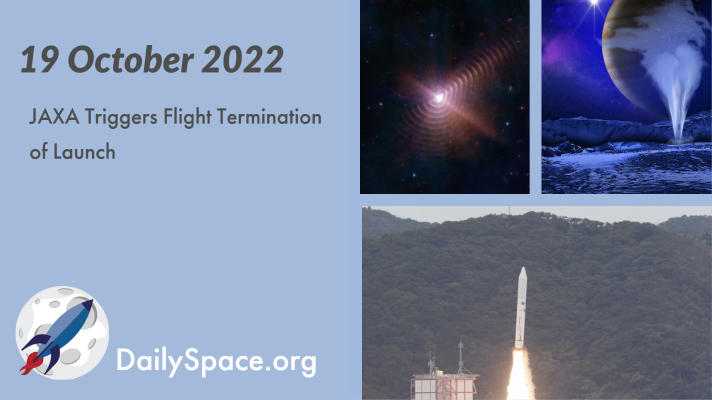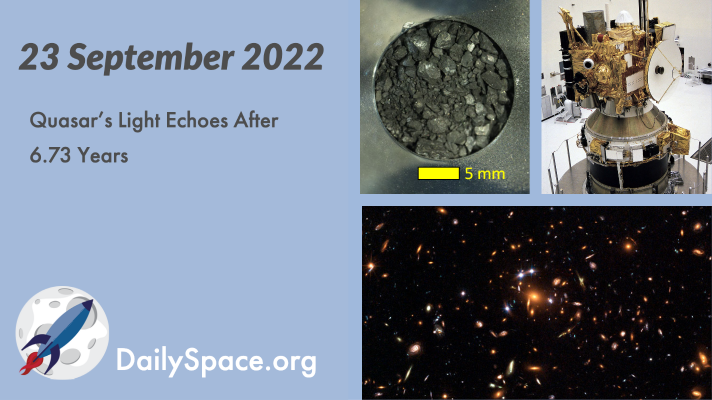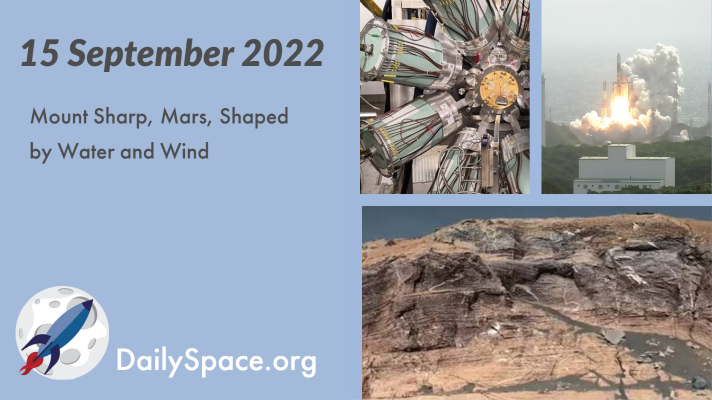
Oct 21, 2022 | Asteroids, Astrobiology, Curiosity, Daily Space, ESA, Galaxies, JAXA, JWST, Mars, OSIRIS-REx, Space History, Star Forming Region, Venus
A trio of asteroid-related stories crossed our emails this week: Bennu’s sample is on schedule for next year’s return, researchers have developed a tool to measure an asteroid’s density distribution, and 3200 Phaeton’s rotational period has accelerated. Plus, JWST’s new Pillars of Creation image, and this week in space history, we look back at Venera 4.

Oct 20, 2022 | Asteroids, Daily Space, DART, Europa, JAXA, Lucy, Mars, Rockets, Space China, SpaceX, Stars, Supernovae
Space is hard, and some days, getting rockets to work doesn’t go as well as expected. An Epsilon rocket launched by JAXA and carrying eight payloads including RAISE 3 was lost when mission control triggered the flight termination system due to an attitude issue. Plus, stars blowing dust rings, stars exploding, asteroids getting hit with spacecraft, and Europa’s geysers may not come from the subsurface ocean.

Sep 24, 2022 | Asteroids, Daily Space, DART, Europa, Fast Radio Bursts, JAXA, Jupiter, Mars, Quasar, Random Space Fact, Space History
Astronomers using the 1.2-meter Whipple Observatory to follow the brightness of a lensed galaxy for 14.5 years have calculated that the time delay between light arriving along the shortest and farthest paths is 6.73 years. Plus, DART, Hayabusa2, Juno, fast radio bursts, and This Week in Space History, we look back at NASA’s 1990s attempts to reach Mars.

Sep 16, 2022 | Climate Change, Cosmology, Curiosity, Daily Space, Earth, Exoplanets, JAXA, Mars, Moon, Physics, Quantum, Rockets, Space China, Space History, Spacecraft, Supernovae, White Dwarfs
Data and images from NASA’s Curiosity rover found evidence that wind played a key role in erosional processes on the red planet, despite the lower atmospheric volume. Plus, astrophysics and cosmology news, a baby exoplanet, and this week in space history, we look back at an uncrewed lunar mission from Japan.

Mar 28, 2022 | Cosmology, Crewed Space, Daily Space, ESA, JAXA, Review, ROSCOSMOS, Spacecraft, White Dwarfs
Researchers use data from ESA’s Gaia telescope to discover that white dwarf stars have two different distributions both in how they move and how bright they shine. Plus, all the International Space Station news, simulated JWST observations, and a review of a macro lens from Venus Optics.

Mar 24, 2022 | Asteroids, Cassini, Crewed Space, Daily Space, Galaxies, Gemini North, JAXA, Random Space Fact, Rockets, Saturn, Science, Space History, Spacecraft
After detecting high levels of organic matter using remote sensors at the asteroid Ryugu, numerical models show that it’s possible that rubble pile asteroids are actually extinct comets. Plus, the Cosmic Optical Background, Enceladus’s tiger stripes, and this week in rocket history, we look back at STS-45.








 We record most shows live, on Twitch. Follow us today to get alerts when we go live.
We record most shows live, on Twitch. Follow us today to get alerts when we go live.